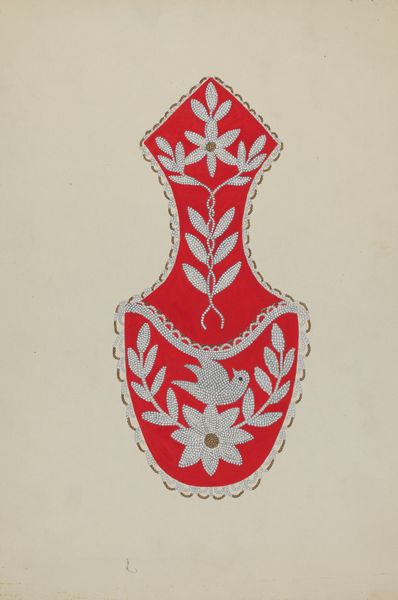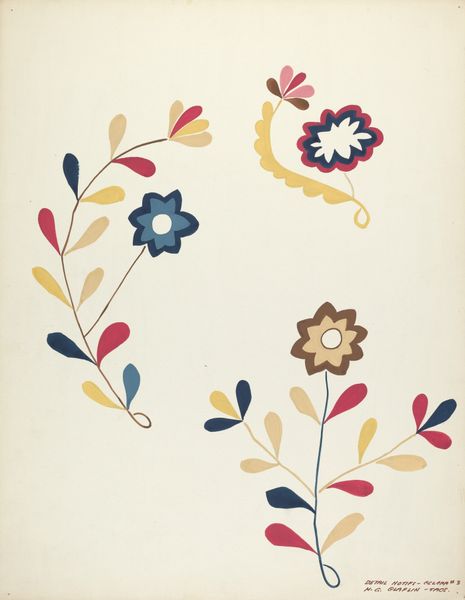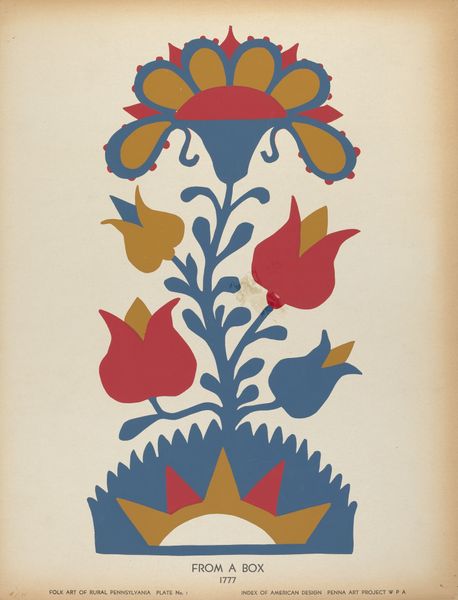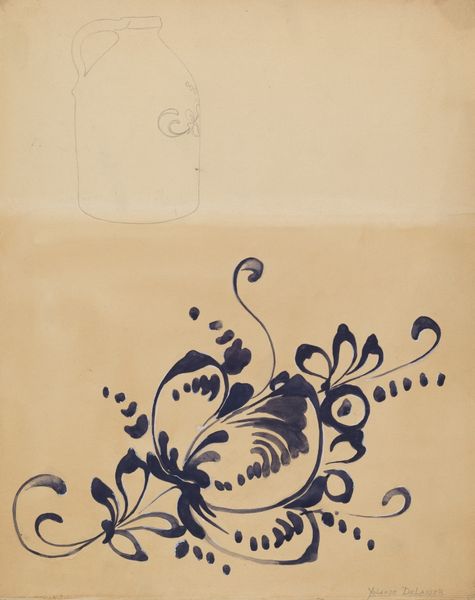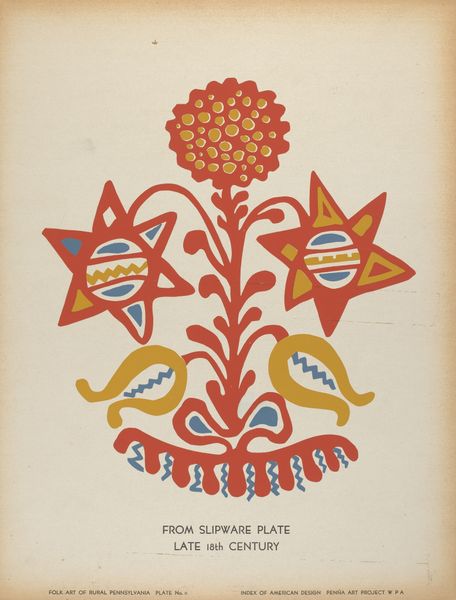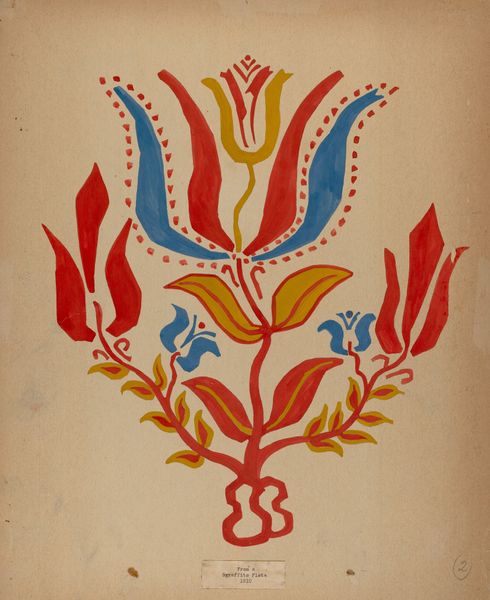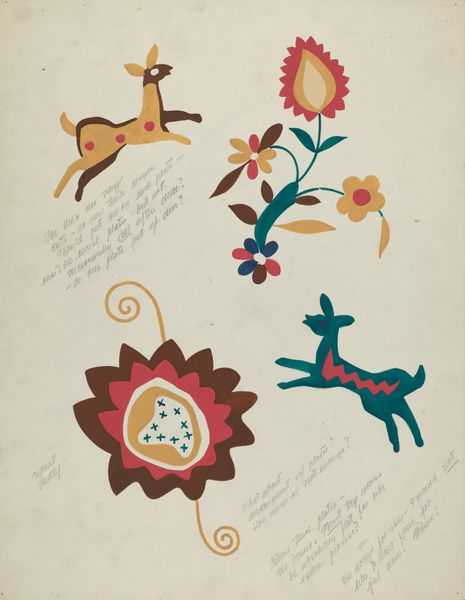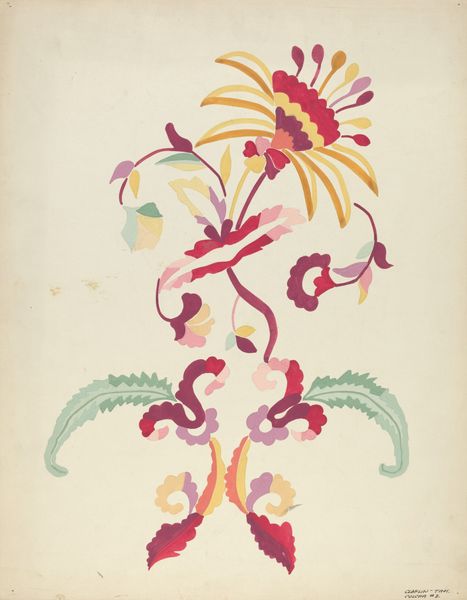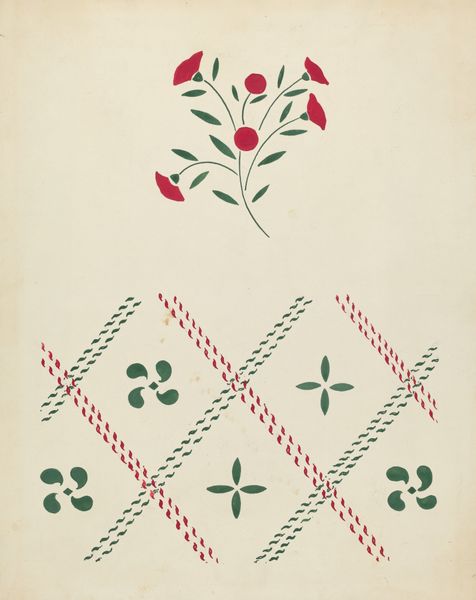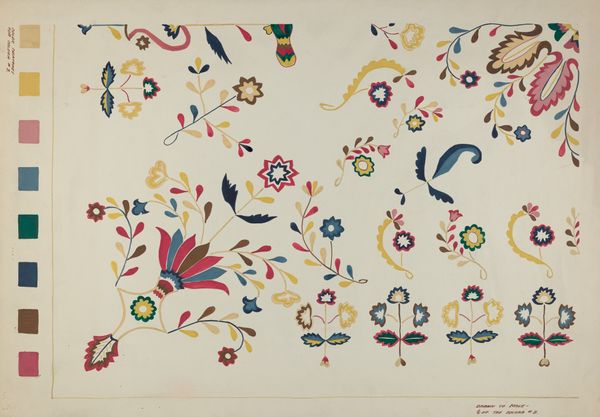
drawing
#
drawing
#
folk-art
#
geometric
#
abstraction
#
decorative-art
Dimensions: overall: 45.9 x 35.7 cm (18 1/16 x 14 1/16 in.)
Copyright: National Gallery of Art: CC0 1.0
Editor: This is a drawing titled "Colcha" created between 1935 and 1942 by Majel G. Claflin. I am immediately drawn to how vibrant and almost dreamlike the shapes appear, like a memory of a flower rather than a direct depiction. It's got a lovely folk-art quality. What jumps out at you? Curator: Well, the boldness certainly catches the eye. I'm taken by the intentionality, though. These aren’t just random floral doodles, are they? Consider the era – the Depression era, when "making do" was an art form itself. This "Colcha," which means "bedspread," strikes me as less of a study and more of a personal attempt to envision warmth and beauty in very hard times. Does the stylized form strike you as intentional, as purposeful simplicity, perhaps? Editor: It absolutely does! It makes me wonder about the source of these designs and their simplification. Were they redrawing real patterns, and stripping them back? Curator: Precisely! Folk art, at its heart, often pulls from tradition, right? And those traditions are always changing, adapted to available resources and personal visions. Look at the way geometric shapes and the natural world seem to play together. Think of it as someone whispering a story passed down, a design slowly becoming their own unique version of the tradition. Don't you see something similar? Editor: I love that whispering story metaphor, and the suggestion of an ongoing exchange between personal and traditional motifs. I was seeing decoration; now I am thinking about innovation. Curator: Isn’t that the magic, though? To find something both ancient and entirely new woven together? To appreciate that the most deeply personal art can echo with a collective history.
Comments
No comments
Be the first to comment and join the conversation on the ultimate creative platform.


